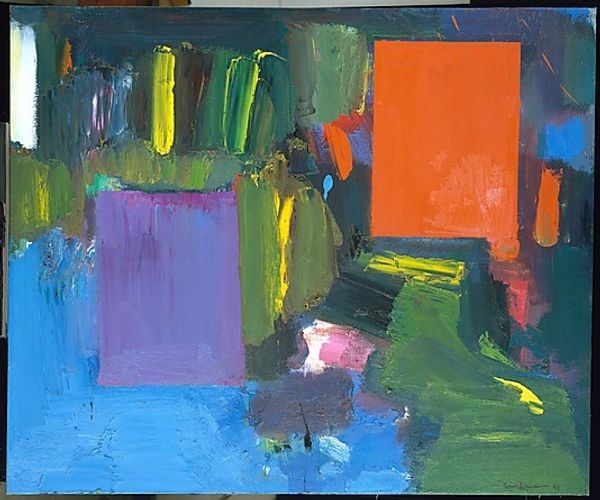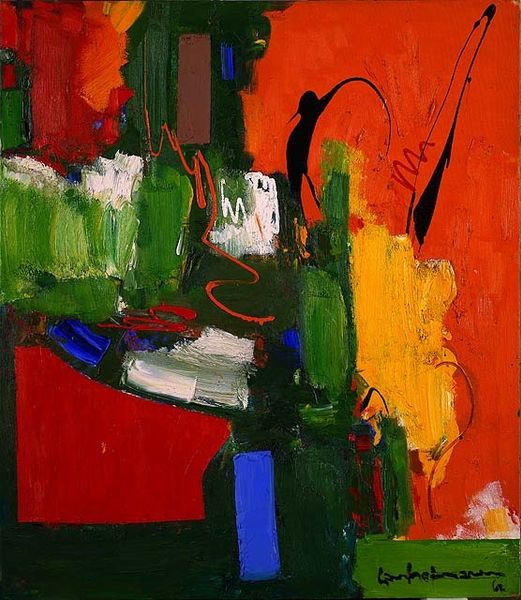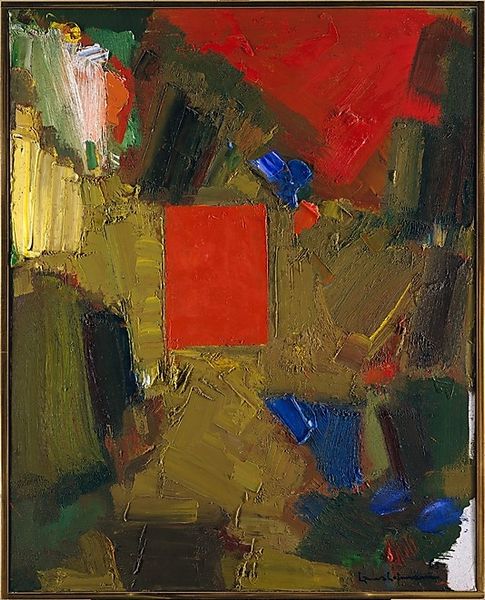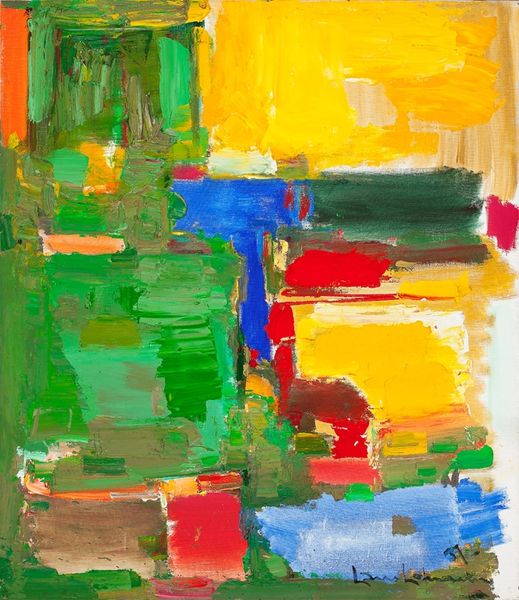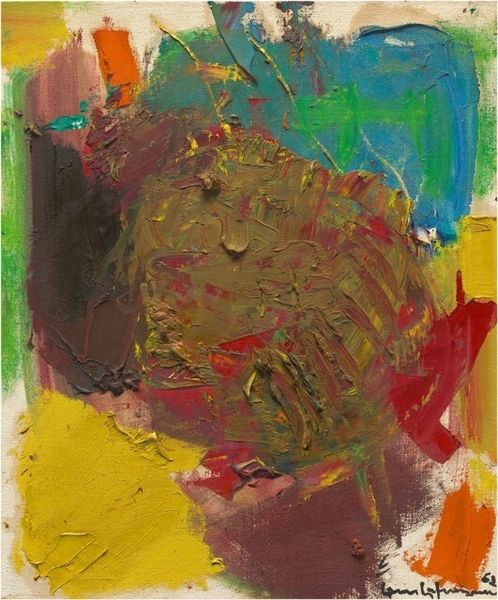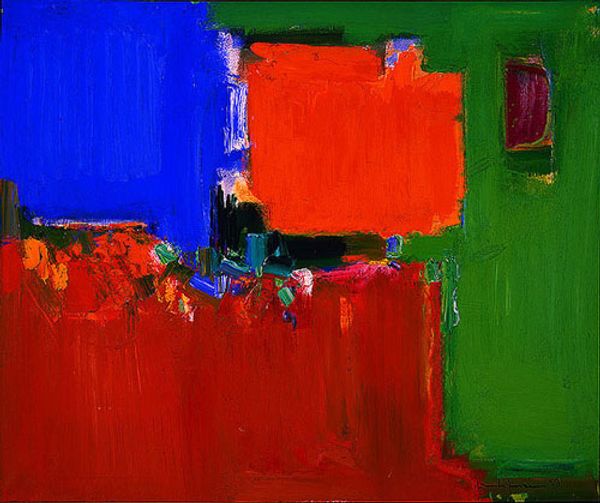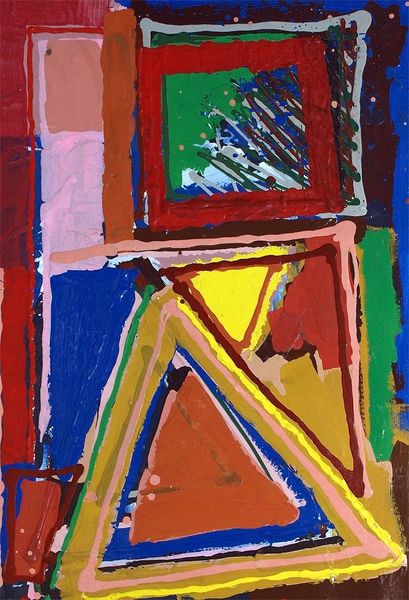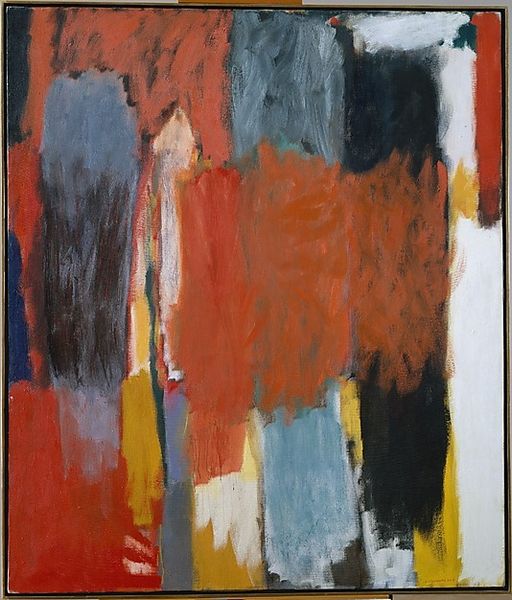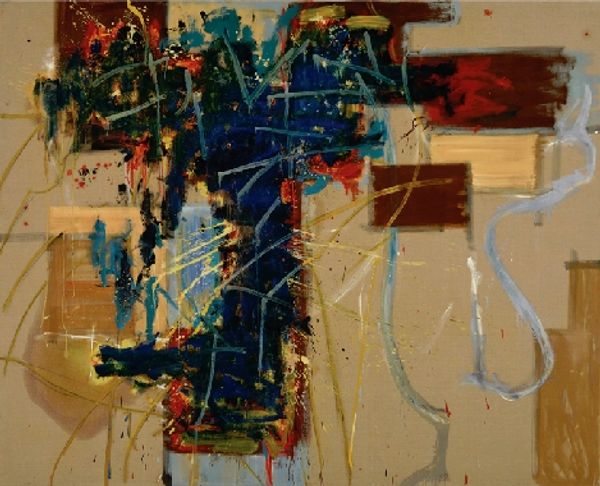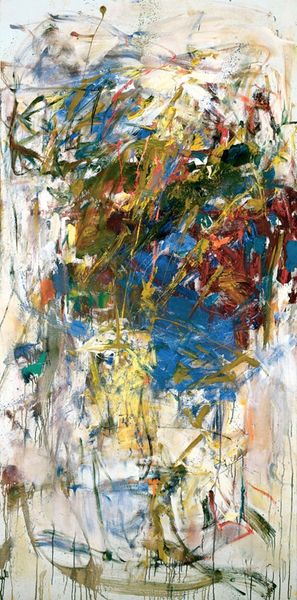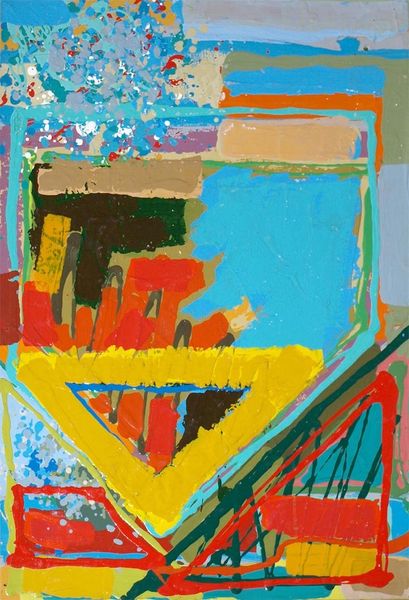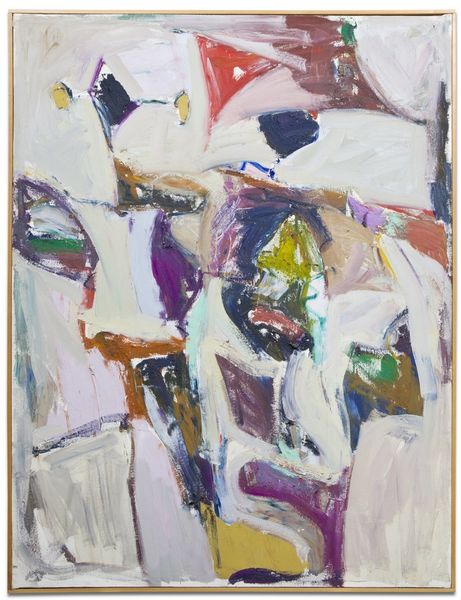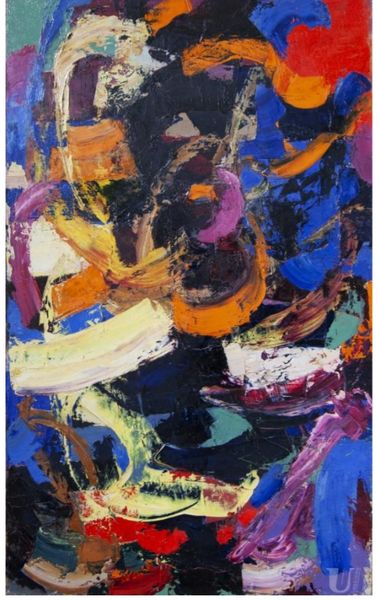
oil-paint, gestural-painting, impasto
#
abstract-expressionism
#
abstract expressionism
#
abstract painting
#
oil-paint
#
landscape
#
oil painting
#
gestural-painting
#
impasto
#
abstraction
Dimensions: 213 x 153 cm
Copyright: Hans Hofmann,Fair Use
Curator: What a powerful display of color and form. "Deep Within the Ravine," created in 1965 by Hans Hofmann. You can see the use of oil paint, gestural marks, and impasto create a very visually arresting work. Editor: It's chaotic, isn't it? My immediate impression is a sort of claustrophobic intensity. The heavy blacks seem to swallow the brighter colours struggling to emerge. Curator: Absolutely, and it's vital to see this painting as working within the historical context of post-war abstract expressionism. Consider the anxieties of the Cold War era, the shifting identity of the artist in a rapidly changing world. Could this “ravine” symbolize an internal descent? Editor: I see your point. The historical lens does bring forward the anxieties. The title leads me towards interpreting it as an actual landscape, although highly abstracted. I suppose a real ravine could also be read as a metaphor for social chasms or political divides of the time. How might societal pressures have shaped Hofmann’s palette and brushstrokes? Curator: Precisely! Looking at the gestural quality of the strokes, the almost violent application of paint, it suggests a frustration or perhaps a rebellion against conventional artistic and social constraints. The composition isn’t simply about aesthetics, it's a statement of self. This rebellion resonates deeply. It pushes at the established order of things and artistic expression within it. Editor: Yes, it could easily read as protest through abstract expression. But if we focus solely on historical context, are we not doing injustice to the artist's subjectivity and own lived experiences, perhaps their psychological state at the time? Maybe "Deep Within the Ravine" speaks more directly of inner torment than broader social woes. Curator: A necessary counterbalance, of course. Intersectionality requires us to acknowledge personal experience alongside broader social structures. To what degree do societal constraints impact personal emotions? It's a spectrum, not a dichotomy. And through acknowledging different viewpoints, the art continues to be a timely relevant expression, whether that expression is external, internal, or both. Editor: I think exploring art through interconnected lenses—both societal and personal, gives viewers today permission to bring their own understanding to art in an attempt to construct meaning that reflects both the historical framework, but, maybe more importantly, that speaks directly to lived realities today. Curator: Precisely, and isn’t that where true appreciation begins? Thanks for adding to that exploration today!
Comments
No comments
Be the first to comment and join the conversation on the ultimate creative platform.
